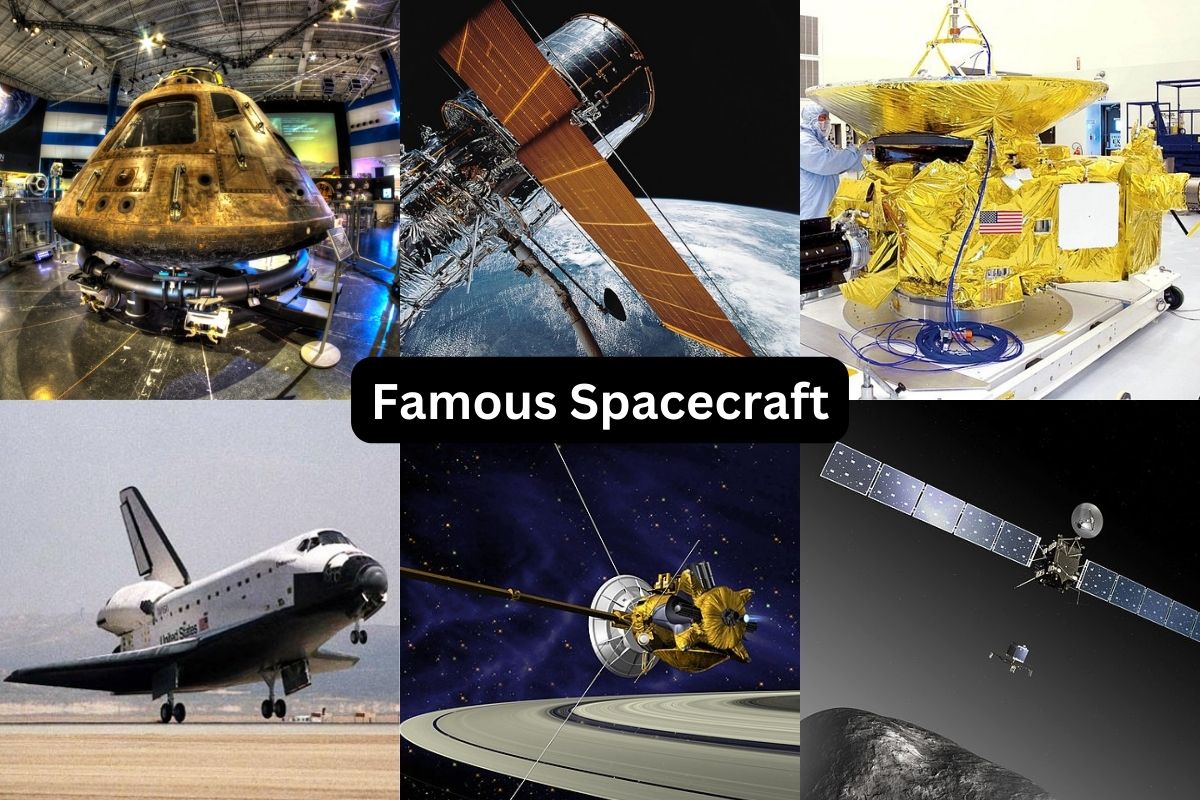In the annals of space exploration, certain spacecraft have risen to legendary status, leaving an indelible mark on our understanding of the cosmos and the capabilities of human engineering.
These remarkable vessels have ventured to distant planets, gazed into the depths of the universe, and even journeyed to the Moon.
In this article, we delve into the stories of some of the most famous and influential spacecraft that have reshaped our perception of the cosmos, from the historic Apollo 11 to the groundbreaking Hubble Space Telescope and beyond.
Join us on a journey through the stars as we explore the missions, discoveries, and enduring legacies of these iconic spacecraft.
Famous Spacecraft
1. Apollo 11
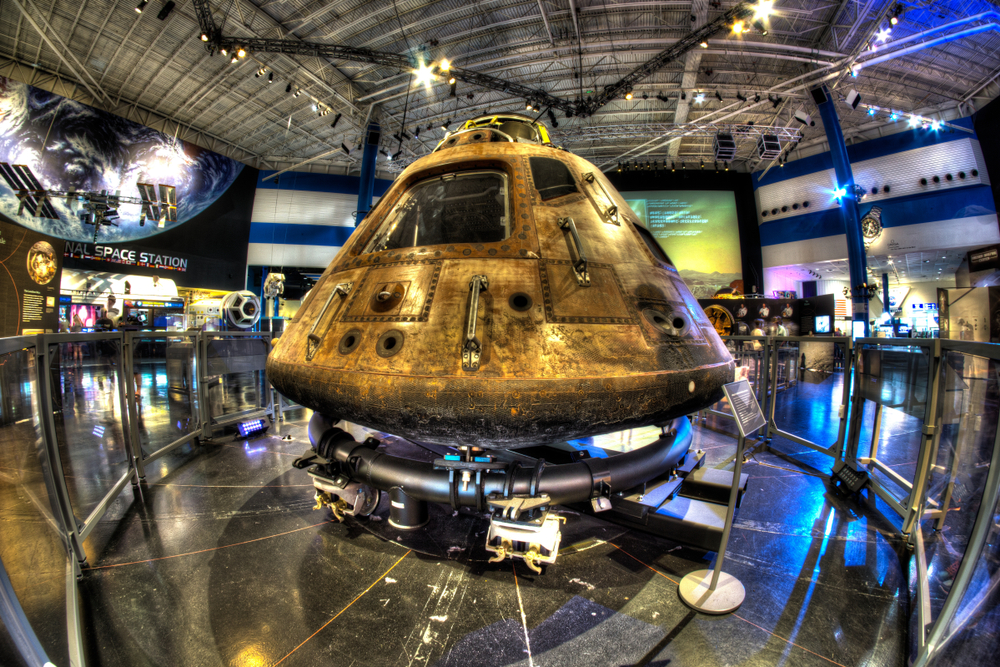
Apollo 11 was a historic NASA mission that took place in 1969 and marked the first time humans set foot on the Moon. The spacecraft consisted of the Command Module “Columbia” and the Lunar Module “Eagle.”
Also Read: Apollo 13 Timeline
Astronauts Neil Armstrong and Buzz Aldrin descended to the lunar surface on July 20, 1969, while Michael Collins remained in orbit around the Moon. Neil Armstrong’s iconic words, “That’s one small step for man, one giant leap for mankind,” were spoken during the first lunar EVA (extravehicular activity).
The mission was a major milestone in space exploration and a symbol of human achievement.
2. Voyager 1 and Voyager 2
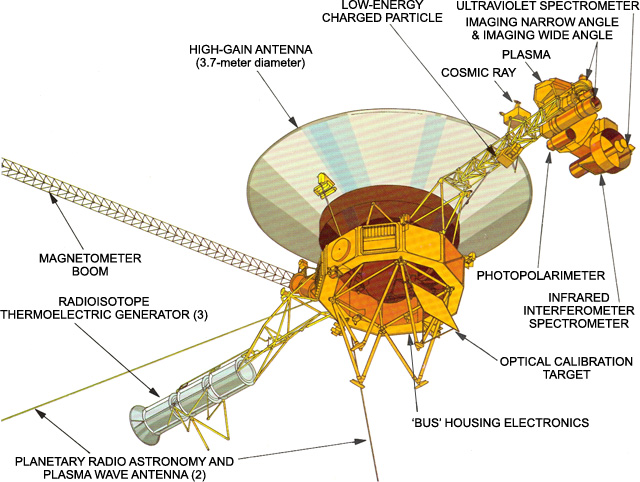
Voyager 1 and Voyager 2 are twin spacecraft launched by NASA in 1977 to explore the outer planets of our solar system. They provided unprecedented insights into these distant worlds.
Voyager 2 visited Jupiter, Saturn, Uranus, and Neptune, while Voyager 1 took a different trajectory to explore the outer reaches of our solar system and has now entered interstellar space.
Both spacecraft continue to transmit data back to Earth, offering valuable information about the heliosphere and the conditions in interstellar space.
Voyager 1 carries the Golden Record, a message from Earth to potential extraterrestrial civilizations, containing sounds and images representing our planet’s diversity and culture.
3. Hubble Space Telescope
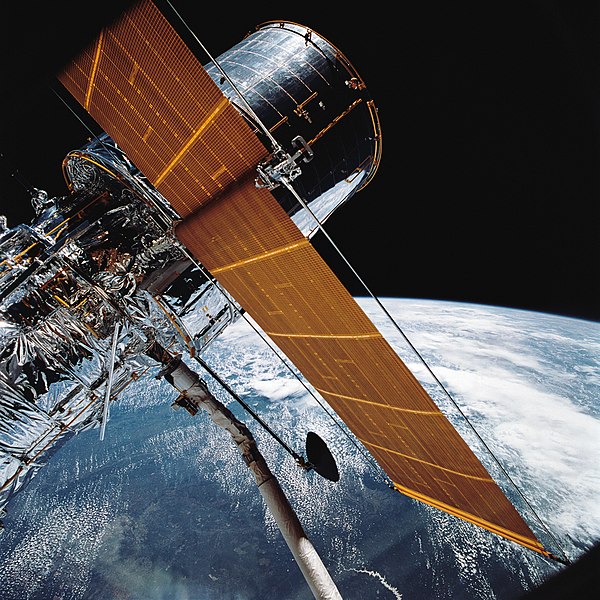
The Hubble Space Telescope (HST) is a space-based observatory launched in 1990. It was a collaboration between NASA and the European Space Agency (ESA).
Hubble has provided breathtaking images and conducted scientific observations of distant galaxies, nebulae, stars, and planets. Its observations have significantly advanced our understanding of the cosmos.
Also Read: Timeline of the Kennedy Space Center
HST’s ability to capture high-resolution images above Earth’s atmosphere has allowed astronomers to make groundbreaking discoveries about the age of the universe, the existence of dark matter, and the expansion rate of the cosmos, among many other topics.
Several servicing missions have kept Hubble operational, extending its scientific capabilities and lifespan.
4. Cassini-Huygens

The Cassini-Huygens mission, a collaboration between NASA, the European Space Agency (ESA), and the Italian Space Agency (ASI), was launched in 1997 with the primary goal of studying Saturn and its moon system.
Cassini, the main spacecraft, arrived at Saturn in 2004 and spent over a decade studying the planet, its rings, and its numerous moons. It provided valuable data on Saturn’s atmosphere, magnetic field, and the complex interactions between its rings and moons.
Huygens was a probe carried by Cassini that successfully landed on Saturn’s largest moon, Titan, in January 2005. It transmitted data back to Earth, revealing the moon’s thick atmosphere and liquid methane lakes.
The Cassini-Huygens mission concluded in 2017 with the spacecraft intentionally plunged into Saturn’s atmosphere, providing unique data on the planet’s composition and structure.
5. Mars Rovers (e.g., Curiosity, Perseverance)

NASA’s Mars rover missions have been exploring the Martian surface to study its geology, climate, and the potential for past or present life.
The Mars rovers, including Curiosity (launched in 2011) and Perseverance (launched in 2020), are equipped with advanced scientific instruments to analyze the Martian soil and rock samples, search for signs of microbial life, and test technology for future human missions to Mars.
These rovers have discovered evidence of ancient water on Mars, explored the planet’s history, and contributed to our understanding of its potential habitability.
6. International Space Station (ISS)
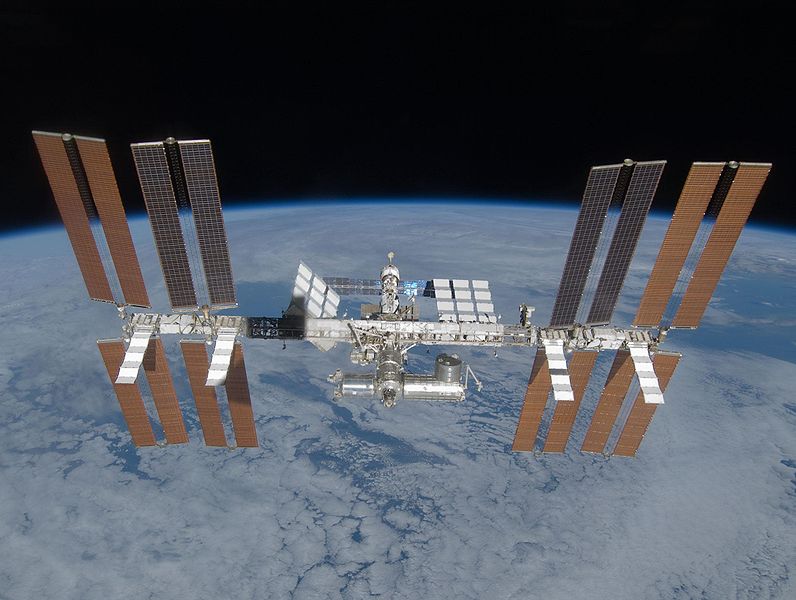
The International Space Station is a remarkable collaboration between multiple space agencies, including NASA, Roscosmos, ESA, JAXA, and CSA. It has been continuously inhabited by astronauts since November 2000.
The ISS serves as a microgravity laboratory for scientific research, technology development, and international cooperation in space. Experiments conducted on the ISS have led to advances in medicine, materials science, and Earth and space sciences.
It orbits Earth at an altitude of approximately 420 kilometers (260 miles) and travels at a speed of about 28,000 kilometers per hour (17,500 miles per hour).
The station has provided valuable data on the effects of long-duration spaceflight on the human body, crucial for planning future missions to destinations like Mars.
7. New Horizons
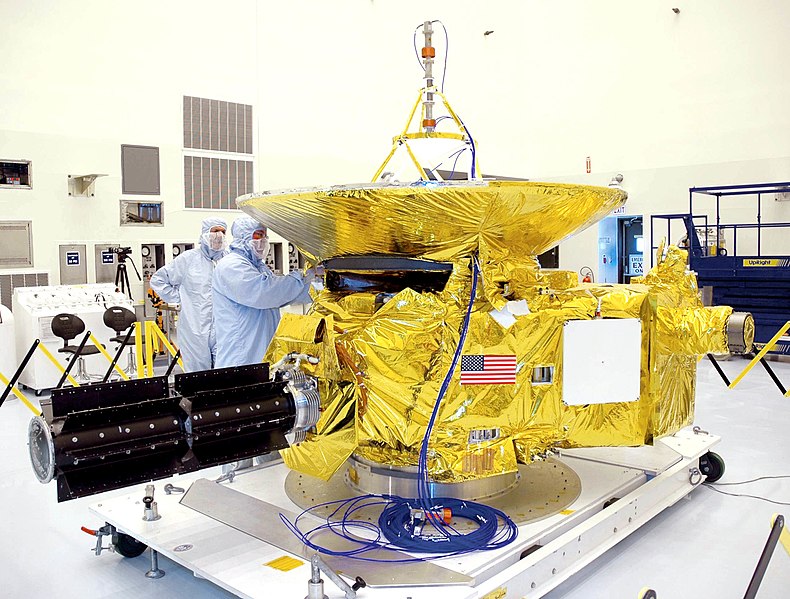
New Horizons is a NASA spacecraft launched in 2006 with the primary mission of exploring Pluto and its moon system. It conducted a historic flyby of Pluto in July 2015, providing the first up-close images and data of this distant dwarf planet.
The mission expanded our understanding of Pluto’s geology, atmosphere, and surface features. It also revealed Pluto’s diverse landscape, including icy plains, towering mountains, and a hazy nitrogen atmosphere.
After the Pluto flyby, New Horizons continued its journey into the Kuiper Belt, where it explored additional icy bodies and provided insights into the outermost regions of our solar system.
8. Apollo 13
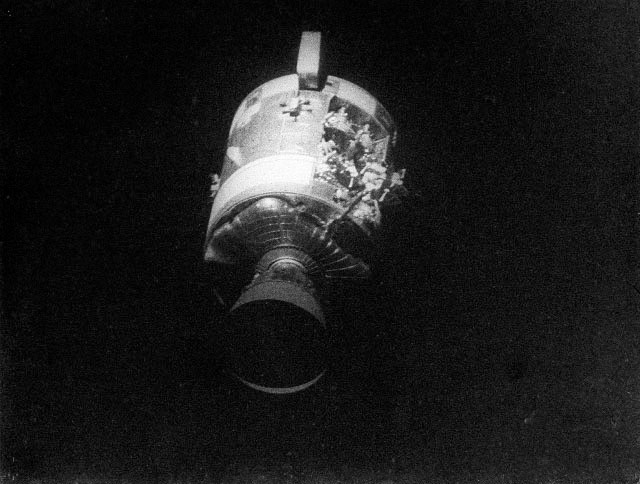
Apollo 13 was the seventh crewed mission in NASA’s Apollo program, launched in 1970 with the goal of landing on the Moon. However, it is most famous for its near-catastrophic incident.
While en route to the Moon, an oxygen tank in the Service Module exploded, forcing the mission to be aborted. The crew, consisting of James Lovell, John Swigert, and Fred Haise, faced life-threatening challenges to return safely to Earth.
Through ingenuity and the cooperation of mission control and the astronauts, Apollo 13 safely splashed down in the Pacific Ocean. The mission became a symbol of NASA’s ability to handle crisis situations and brought attention to the risks of space exploration.
9. Rosetta and Philae
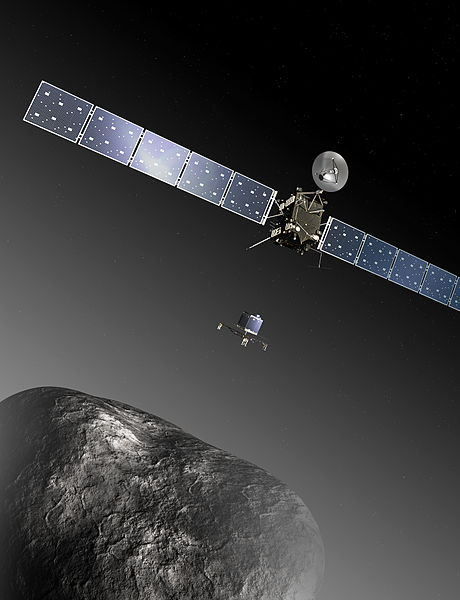
The Rosetta spacecraft, launched by the European Space Agency (ESA), embarked on a mission to study and land on Comet 67P/Churyumov-Gerasimenko in 2014.
The mission marked the first time a spacecraft had successfully orbited and deployed a lander to a comet’s surface. The lander, named Philae, made a historic touchdown on the comet’s surface and conducted scientific experiments.
Rosetta continued to study the comet as it approached the Sun, providing valuable data about cometary composition and behavior. The mission concluded with Rosetta’s controlled descent onto the comet’s surface in September 2016.
10. Space Shuttle (e.g., Discovery, Atlantis)
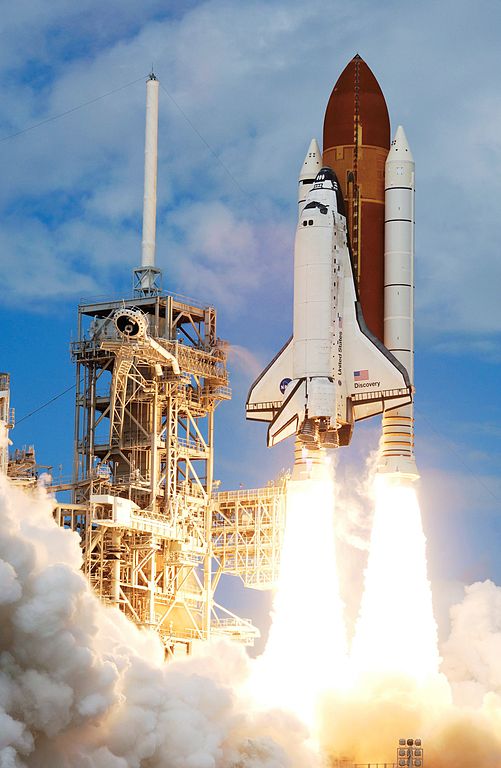
The Space Shuttle program, operated by NASA from 1981 to 2011, was a fleet of reusable spacecraft designed for a variety of missions, including launching satellites, conducting scientific research, and assembling and servicing the International Space Station (ISS).
The Space Shuttle consisted of an orbiter, solid rocket boosters, and an external fuel tank. It allowed astronauts to travel to and from low Earth orbit (LEO) and carried out numerous missions, including the deployment of the Hubble Space Telescope.
The Space Shuttle program made space more accessible and played a pivotal role in building and sustaining the ISS. However, it also faced challenges and tragedies, such as the loss of the Space Shuttle Challenger in 1986 and the Space Shuttle Columbia in 2003.
